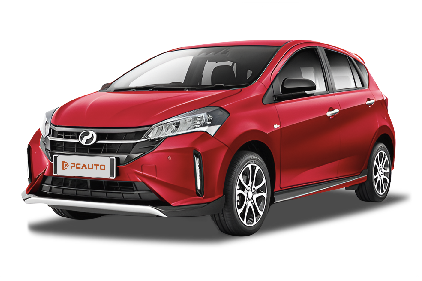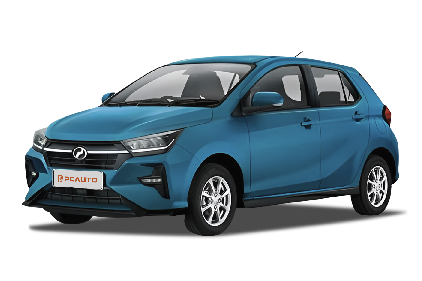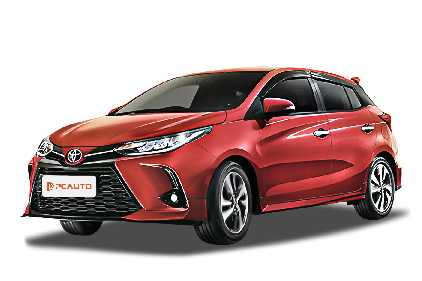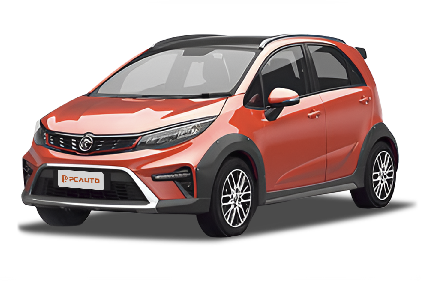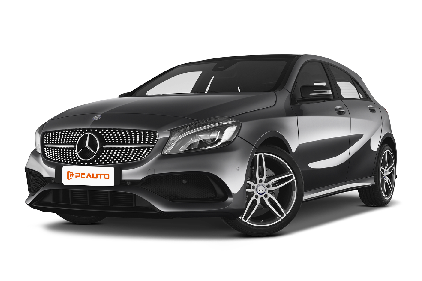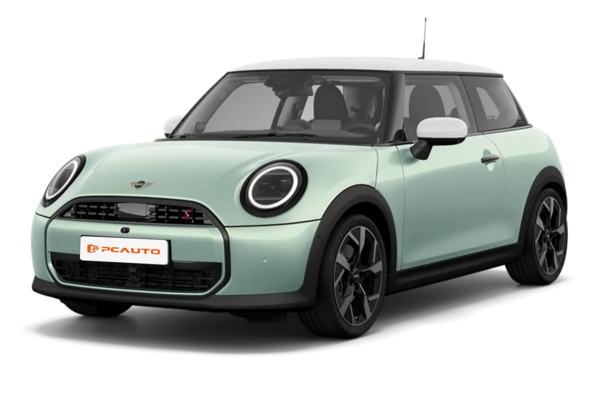Q
Is Hyundai Elantra a full-size car?
No, Hyundai Elantra isn't a full - size car. It's classified as a compact car (Class C). Full - size cars are generally larger in size and offer more spacious interiors. The 2021 model of Elantra has a length of 4,675 millimeters, a width of 1,825 millimeters, a height of 1,430 millimeters, and a wheelbase of 2,720 millimeters. These dimensions are typical of mid - size or compact cars (Class C). Full - size cars usually have more length, width, and longer wheelbase to provide more space for passengers and cargo. Elantra can comfortably seat five people, but its dimensions are designed to balance handling and interior comfort within the compact car (Class C) category, not as a full - size vehicle.
Q
What is the Length of Perodua Bezza?
As one of the most popular B-segment sedans in Malaysia, the Perodua Bezza has a body length of 4,170 millimeters. This dimension provides excellent flexibility for driving and parking in the city while ensuring the practicality of the interior space. The Bezza has a wheelbase of 2,455 millimeters, offering comfortable legroom for passengers, especially those sitting in the rear seats who can enjoy a spacious riding experience. This car also boasts a luggage capacity of 508 liters, which is outstanding among its peers and is highly suitable for family use or long - distance trips.
The Bezza is designed with a focus on fuel economy and practicality. It comes with efficient 1.0 - liter and 1.3 - liter engine options and is equipped with the Eco Idle energy - saving technology, which further reduces fuel consumption and meets the needs of Malaysian consumers for economical cars. In addition, the Bezza is equipped with multiple safety features such as ABS, EBD, and dual airbags, ensuring driving safety.
For Malaysian consumers with a limited budget who still desire practicality and reliability, the Perodua Bezza is undoubtedly a choice worth considering.
Q
Is the S-Max bigger than the C-Max?
Yes, the Ford S-Max is indeed larger in size than the C-Max. The S-Max belongs to the mid-size MPV category, with a body length exceeding 4.8 meters. It offers a three-row, seven-seat layout, which is suitable for families or group outings. On the other hand, the C-Max is a compact MPV with a body length of about 4.3 meters and a five-seat design, making it more suitable for small families or daily commuting.
In the Malaysian market, the S-Max's space and practicality are more popular among large families, especially those who need more seats and storage space. Meanwhile, the C-Max stands out for its flexibility and fuel economy, making it a good choice for city driving. Both models are equipped with Ford's well-developed powertrain. The S-Max leans towards better power performance, while the C-Max focuses on fuel efficiency. Consumers can make a choice based on their actual needs.
Moreover, since Malaysia has many mountain roads and congested city traffic, the compact size of the C-Max may be more suitable for narrow roads, while the spacious interior of the S-Max is better for long-distance travel. It is recommended to take a test drive before purchasing a car, considering the number of family members and the intended use.
Q
What's the fuel consumption per 100 km of the GAC GS3?
The official combined fuel consumption of different model versions of GAC GS3 varies. The official combined fuel consumption of the 2024 model is 5.9L per 100km, while that of the 2021 model is 6.9L per 100km. The actual fuel consumption per 100km of the vehicle is affected by various factors, such as driving habits, road conditions, vehicle load, and usage of the air conditioner. Situations such as rapid acceleration, sudden braking, prolonged idling, and high-speed driving usually increase fuel consumption, whereas good driving habits like smooth driving, proper gear shifting, and maintaining an appropriate speed help reduce it. Actual fuel consumption usually fluctuates around the official data and may be higher or lower than the stated value. Car owners can optimize their driving habits in daily use to achieve better fuel efficiency.
Q
where is the honda civic type r made
The Honda Civic Type R is currently built at the Tochigi Plant's Yorii factory in Japan, a facility renowned for its top - tier manufacturing processes and specialized in assembling Honda's high - performance models, including every generation of the Type R. For Malaysian car enthusiasts, it's worth noting that as a global strategic model, the right - hand drive version of the Civic Type R adheres strictly to the original Japanese specifications. That means the Type R you get in Malaysia shares the same core components and tuning as the ones rolling out for the domestic Japanese market. What's more, Honda has continuously refined the engineering of the Type R, including the powerful K20C1 turbocharged VTEC engine and chassis technology such as the limited - slip differential in the front - wheel - drive layout, which has helped it hold onto those blistering Nürburgring lap records for front - wheel - drive cars. It truly showcases Honda's profound technical expertise in building performance cars. Malaysian customers can order through official channels and enjoy after - sales support that's on par with the rest of the world, including access to exclusive performance parts. However, it should be noted that depending on the model year, there might be minor configuration tweaks to meet global market demands, but rest assured, the core performance and build quality always stay at that legendary high level.
Q
Does Audi A3 have high maintenance cost?
The maintenance cost of Audi A3 is relatively high. It provides a 5 - year, unlimited - mileage warranty. The first maintenance is required at 10,000 kilometers or 1 year, and a free minor adjustment is provided, which includes engine oil and filter replacement with no labor cost. After that, the maintenance interval is also 10,000 kilometers or 1 year.
The cost of a minor adjustment at the original factory is about RM1,463. The cost of a routine maintenance at 60,000 kilometers is about RM11,645. The maintenance cost per 10,000 kilometers is about RM1,940, and the price of a routine maintenance at 100,000 kilometers is about RM21,745.
Compared with some models in the same class, the frequency of some maintenance items for the Audi A3 is higher and the cost is a bit more. For example, its maintenance cycle is 10,000 kilometers or 12 months, while the BMW 1 Series has a maintenance cycle of 15,000 kilometers or 12 months, so the engine oil and filter of the Audi A3 need to be replaced more frequently.
However, if you choose non - original maintenance, the cost can be reduced by about 30%. But you need to carefully choose the repair shop. When the car is used for a long time or has covered a long distance, the maintenance cost will increase. Reasonably planning the maintenance schedule and developing good driving habits can control the maintenance cost to a certain extent.
Q
Does Golf GTI have an automatic transmission?
Yes, all Golf GTI models are equipped with automatic transmissions. Specifically, they are equipped with a 7-speed dual-clutch transmission (DCT). This type of transmission combines the advantages of both manual and automatic transmissions. It shifts gears rapidly, enabling smooth acceleration and efficient power transfer. In daily driving, the dual-clutch transmission operates very smoothly, enhancing the overall driving experience.
For example, both the 2024 Volkswagen Golf GTI Edition 50 and the 2022 Volkswagen Golf GTI feature this 7-speed dual-clutch transmission. This automatic transmission system not only simplifies driving, especially in congested traffic, but also improves the vehicle's sporty performance, allowing drivers to easily enjoy the Golf GTI's powerful engine. Whether you're cruising on the highway or navigating through city streets, the automatic transmission ensures a comfortable and enjoyable driving experience.
Q
ora good cat made in which country
The Mitsubishi Xpander has become a hit in Malaysia's 7-seater MPV scene, and it's easy to see why. Under the hood, you'll find a 1.499 cc (that's a 1.5-liter to you and me) naturally aspirated four-cylinder petrol engine, pushing out 105 horsepower and 141 Nm of torque. It pairs with either a 4-speed auto or a 5-speed manual gearbox, depending on the trim you go for – perfect for both daily family runs and those longer highway hauls.
What really sells the Xpander here is its practical cabin space and solid fuel economy. That 1.5-liter engine is a smart balance of power and efficiency, which fits the stop-start of Southeast Asian city driving like a glove. If you're into the techy stuff, check out Mitsubishi's MIVEC system – that's their variable valve timing tech, which helps squeeze out better fuel mileage and keeps emissions in check.
Malaysian car owners also keep a close eye on road tax, right? Well, the Xpander's 1.5-liter displacement slots it under the 1,501 cc bracket, meaning road tax is pretty wallet-friendly – around RM90 a year. That's definitely one of the big reasons it's so popular locally. On top of that, Mitsubishi's got a solid after-sales network here, with reliable parts supply, so keeping your Xpander on the road is hassle-free.
Q
What is the life expectancy of Hyundai Sonata Hybrid?
The service life of the Hyundai Sonata Hybrid can vary depending on multiple factors. Generally speaking, the battery of the Sonata Hybrid usually lasts about 5 years. As for other components, Hyundai offers a 5 - year or 300,000 - kilometer warranty for the whole vehicle, which reflects the expected durability of the vehicle under normal use conditions. The warranty periods for some core components, such as the power battery assembly, drive motor assembly, motor controller assembly, and vehicle controller assembly, are even longer, sometimes up to 8 years or 150,000 kilometers. Regular maintenance, good driving habits, and usage conditions all play important roles. If properly maintained, serviced on time, and driven carefully, this car has the potential to serve you for over 10 years and cover a mileage of as much as 200,000 kilometers or more.
.jpg)

.jpg)
.jpg)
.jpg)

